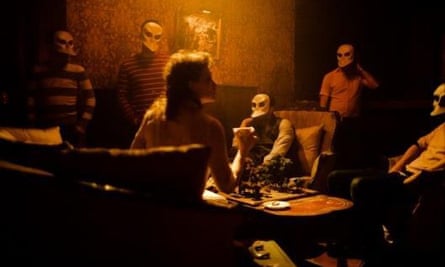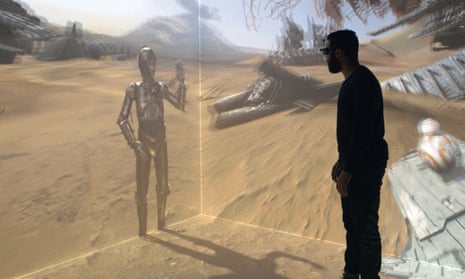Two forces are sending shockwaves through the world of storytelling. The first is that digital technology now offers creative artists myriad platforms to tell their stories in new ways. “We are using code as the canvas,” says Charles Melcher, book publisher and founder of the inaugural Future of Storytelling festival. In other words, whatever you can dream up, today’s advanced software capabilities can make it happen.

At the same time, a younger, digital-savvy audience now wants to drive the narrative from start to finish. Lance Weiler, director of the Digital Storytelling Lab at Columbia University, discovered this first-hand through his work on Sherlock Holmes and the Internet of Things, an online global detective narrative collaboration. The Lab set up a crime scene and provided clues to solve a murder, but that wasn’t enough. The participants wanted to imagine the crime and write the clues themselves. “A new creator class is rising up,” he says. “And it’s challenging the authorship and ownership of stories.”
The FoST festival, which ran from 7-9 October in New York, showcased the extraordinary range of work emerging as a result, bringing together leading storytellers from the worlds of gaming, theatre, film, publishing, television and virtual reality (VR). In a Harlem warehouse – imagine Charlie Kaufman’s Synecdoche, New York meets The Imaginarium of Doctor Parnassus – a cornucopia of interactive experiences beckoned. I wandered between real and imaginary worlds, as if dreaming while awake – from acting a part in Star Trek: Bridge Crew, to entering the curious and desolate world of SENS VR, the first graphic novel to get VR treatment. Participating in a collective immersive session in the 30-person VR theatre, I even pondered the nature of free will while inhabiting the mind of an android re-creation of Philip K Dick, in the 360-film I, Philip.
The experiences that most captured my imagination were those that brought me into the world of the characters and allowed me to influence the story. We say we “enter the minds of characters” when we read books, but role-playing in immersive worlds, such as VR narratives or theatre, takes that sense of immediacy to a whole other level: the narrative feels like something you actually experience. Speaking at the FoST Festival, Beau Lotto, neuroscientist at Ripple, Lab of Misfits and development studio The Chinese Room, explains the satisfaction of being in the driver’s shoes as “the Ikea effect”. “If you put effort into something, you perceive a higher value.” Felix Barrett, artistic director at Punchdrunk theatre company that makes the immersive show Sleep No More, agrees; as immersive narrative VR experiences become more commonplace, theatrical experience is becoming more about audience empowerment: “They own their night … it’s their narrative.”

Creating a feeling of agency is no simple task, and today’s narrative architects employ sophisticated game mechanics and crafty tricks to make decision-making feel fluid and natural for the user. “Too much agency and the story won’t have a good arc,” says Barrett. Audiences can choose their route and tempo, but there are anchor points and the finale must deliver: “There is the illusion of agency, but they are on rails.” This nuanced approach suggests we are entering a sophisticated new era in which the exchange between author and participant creates a better outcome for both, leaving questionable author-fan collaborations of the past behind.
To be successful in this emerging genre, storytellers, especially those moving from traditional roles in publishing, television and film, will need to adapt, in particular by learning new methods of collaborating with users and the new languages of VR technologies. Dan Pinchbeck, creative director at The Chinese Room, points out that already in the gaming industry there is no single writer churning out a plot; what is most important is the focus on developing complex characters, as that offers greater possibilities in a branching, emergent narrative. In Everybody’s Gone to the Rapture, a game about the end of the world, the writers focused on creating compelling characters. The end of the world became the least interesting thing about it; what mattered was how the characters dealt with it.
At Apelab, a studio currently working on Sequenced – an episodic adventure where the story adapts in real time depending on where you look and focus – they begin with paper, pencils and role-playing. Apelab’s founder, Emilie Joly, says that very early on in the creative process they thought about interactivity and how the narrative was going to be directed by the user, as well as where the user was going to be in space. Early experience testing is also important. While working on Invasion!, an immersive VR short film, the team at Baobab Studios did a lot of early prototype testing. Decisions including bringing a spaceship in above the user, with only the sound behind, didn’t have the desired effect. But once a key character – a cute big-eyed bunny – looked up at the spaceship, 99% of the audience turned around. It has never been more important to understand how audiences experience and react to the interactive world you are trying to create. As Kane Lee, head of content at Baobab Studios, says: “It’s about letting go of your ego … letting the user help you navigate.”
As exciting as it is to work with diverse technologies and audiences in new ways, almost everyone speaking at FoST festival agreed that the story should always come first, then the technology. “Stories can have many different platforms to live in, but it’s important to figure out which is the right medium for the story,” said Melcher, who decided to move to the storytelling business when his book publishing enterprise stalled. At the end of the day, agrees David Eisenman, producer of Google Spotlight Stories, his main priority is to work with great storytellers and collaborators. As content creators increasingly cede control, the need for expert storytellers has never been greater.
Three digital experiences to look out for
Late Shift
Watching the Late Shift teaser at FoST festival, I joined an audience of people collectively deciding the fate of the protagonist, a car park attendant whose night gets interesting when he’s coerced, at gun point, into helping a dubious character escape in a stolen car. With smartphones in hand, the majority vote decides the character’s fate, while the film keeps running seamlessly. I’m surprised to find that my choices are often in the majority, pushing the protagonist into greater and greater peril. Should I admit that my enjoyment rises as his situation deteriorates? It isn’t hard to imagine, as the full feature story progresses, that the stakes will be raised with every new decision, and, concomitant with my role in influencing the outcome, my investment in the story.
The Abbot’s Book
When it comes to the best way to experience a 3D or 4D narrative, many storytellers are gravitating towards the first person perspective. For the team at Blackthorn Media working on The Abbot’s Book, featured at the Sundance film festival’s New Frontier program this year, the whole reason to do VR came into focus when they put the user into the protagonist’s shoes. “The most forward-looking way, the best way to jump into this world, was to literally put on a second skin and be different characters in the story,” says Michael Conelly, creative director at the LA-based VR start-up. The Abbot’s Book is an immersive VR narrative series based on a gothic novella by the same name, written by Conelly in 1989. I demoed it with the handheld controllers of the HTC Vive in their LA offices and was as enthralled by the mysterious magic of the world as I was by my mission: to explore the ancient catacombs below the ruins of an 18th-century abbey and uncover the horror of the ancient pagan religion contained within.
1979 Revolution: Black Friday
In this choice-driven narrative game set in Tehran, and based on true stories and historical events, you are thrown into the turmoil of a real-life revolution and must make vital choices in the fight to survive. Playing Reza, an aspiring photojournalist during an uprising against the ruling king, the user’s choices subtly shape the narrative and the fates of characters around them. I demoed a six-minute section of the game on an iPad at the FoST festival and was immediately drawn in by the realistic characters, beautiful CGI graphics and documentary-style narrative. With 19 chapters to explore, new storytelling forms like this can be vital – bringing diverse stories about the world to new audiences and allowing us the rare opportunity to experience life through someone else’s eyes.

Comments (…)
Sign in or create your Guardian account to join the discussion